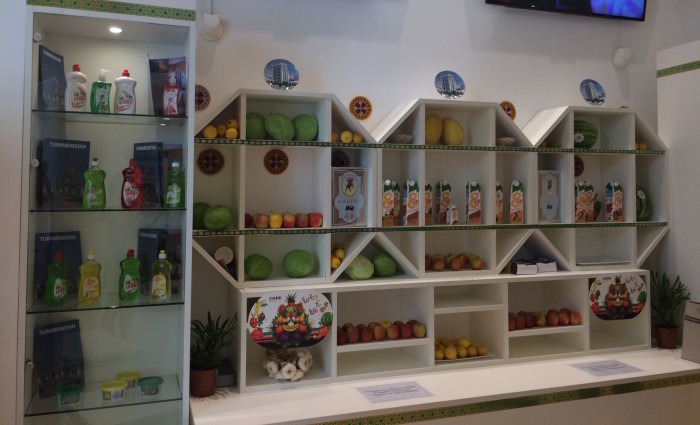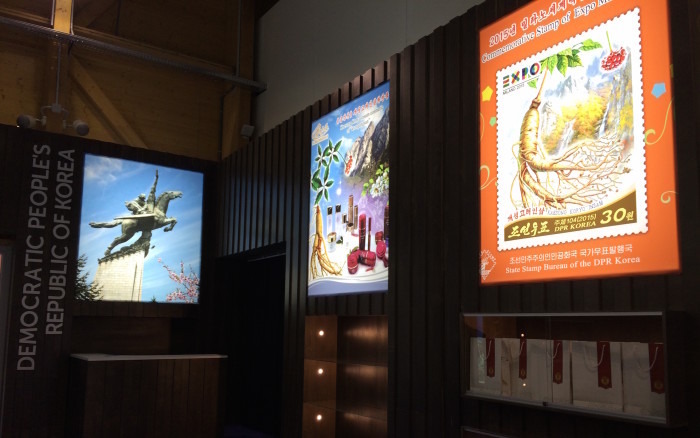A Dispatch From Milan 2015: Working Out The Kinks At The Food-Themed Expo
"Welcome. May I dress you in some of our clothes?"
Awkward phrasing aside, you might have thought I was in a clothing store, probably overseas. But I wasn't. I was in the dedicated space of one of over 140 participating countries in Milan Expo 2015, themed "Feeding the Planet, Energy for Life."
It wasn't the phrasing that threw me off, but the question itself. Because leading up to the six-month exhibition that kicked off last month in May (and my visit last week), I did my research. Participating countries were to showcase how they're providing safe and sustainable food for their citizens. And Matt Rodbard's report on what the U.S. had planned for its pavilion — bias aside, they nailed it — sealed the deal.
As I said "no, thank you" and made my way around the boxy space, I felt like I had stepped into a child's school project, blown up to resemble a life-sized diorama. There were clumps of grains thrown on blankets with hand-written tags indicating what they were. There were large photos of plump women eating corn. There were little flags you could take away as souvenirs. What I couldn't find, though, was a single poster (or even a line of text) speaking to how this country was feeding its population in a safe and environmentally friendly manner.
This wasn't the first space that left me feeling a little, well, strange. Since I dedicated most of my time at the Expo to developing nations, I wound up visiting almost 50 pavilions and clusters (communities of countries categorized by common food groups). But more often than not, I felt like I was at a travel trade show as opposed to an exhibition devoted to responsible eating around the world.

Turkmenistan, for example, looked promising from the outside. But behind its ornate, metallic facade and fountain — the structure looked like it belonged in an amusement park — there was little to learn and look at besides rugs and an awkward display of cabbage and apples, along with packaged juices. And liquid dish soap.
Bangladesh offered an affordable mix of solidly prepared foods, but with zero context. A simple sign outlining why these foods are the backbone of Bangladeshi cuisine (like simple but hearty curries and rice) or how they support the country's natural resources would have been both welcome and informative.

For lots of reasons, North Korea topped my list of countries to check out. And despite all the backlash, the country decided to participate. Discreetly tucked away in the cluster of Islands, Sea and Food, the space was an excellent disappointment. Eerily vacant, with a smattering of empty shopping bags and backlit screens rotating images of ginseng and government propaganda, I left feeling bewildered, short-changed and angry. (The use of the word "democratic" didn't help much.) In true form, they were all bark and no bite.
On the flip side, there were developing nations that delivered. Azerbaijan enlisted the Italian creative collaborative Simmetrico Network to design its pavilion, which featured varied levels of undulating wood walls and three biospheres. The first sphere introduced visitors to geographical landscapes. The second focused on the nine main climate zones of Azerbaijan, and the third highlighted tradition and innovation. A restaurant at the top of the pavilion (and the end of the self-guided experience) served traditional fare. So in terms of design, organization, and education, Azerbaijan got it right.
Called "Food and Culture: Educate to Innovate," Angola's pavilion — visually intense but well organized and highly informative — put the spotlight on education and innovation. A ramp ran around the circumference of the structure, so visitors could always see the key design element. Set up to resemble the national baobab tree, the long, hanging panels rotated striking images of wildlife, agriculture, and women (who play a central role in Angolan culture).
Don't be mistaken, though: High-impact visuals weren't a requisite to inform and impress. At Mozambique's space in the Cereals and Tubers Cluster, a few basic elements spoke volumes. In a poster, José Condungua Pacheco, the country's minister of agriculture and food security, clearly outlined goals, including establishing "best practices" for local agro-livestock enterprises and helping farmers increase productivity in a sustainable manner (not only to feed their families but to create surpluses as well). Photos of key crops further supported and illustrated Pacheco's points.
The display was lean and humble, but guess what? In a few minutes, I had a good grasp of Mozambique's key issues regarding food and how they plan on solving them. It would have been nice to be able to say the same for larger, more developed nations whose budgets were blown on being flashy as opposed to informative.
Read about Milan on Food Republic:

